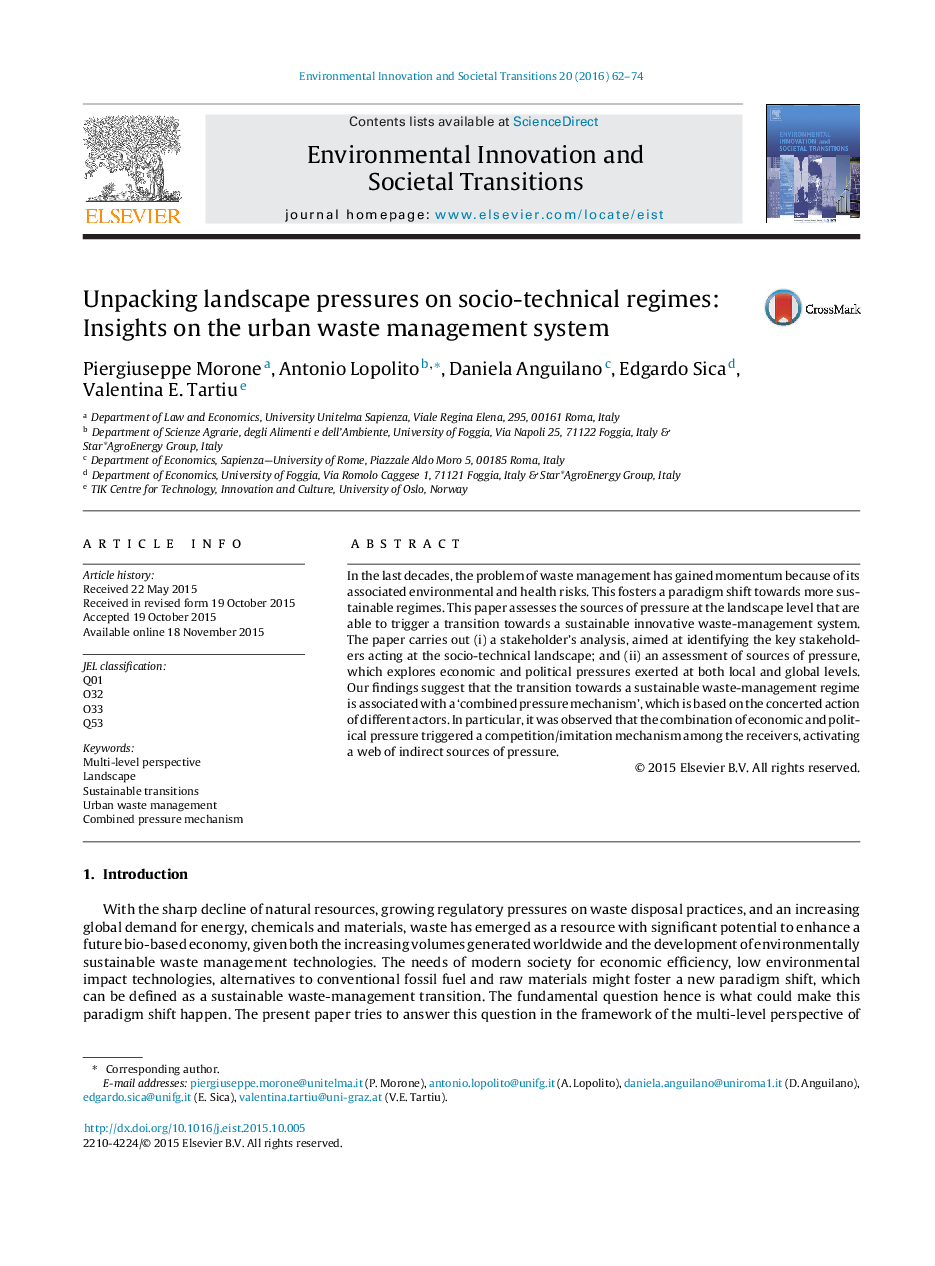| Article ID | Journal | Published Year | Pages | File Type |
|---|---|---|---|---|
| 6464219 | Environmental Innovation and Societal Transitions | 2016 | 13 Pages |
•Building on MLP we develop a new conceptual framework to assess landscape sources of pressure upon the socio-technical regime.•We present a pressure matrix and apply it to a case-study conducted in the province of Foggia south-east of Italy).•We perform a stakeholders’ analysis, aimed at identifying the key stakeholders acting at the socio-technical landscape .•We assess sources of pressure exploring economic and political pressures exerted at both local and global level.•We assessed and classify the key sources of pressure, identify weak and strong areas of pressure.•A low pressure effort can trigger a ‘combined pressure mechanism’ by stimulating competitiveness and leading to a cascade effect.
In the last decades, the problem of waste management has gained momentum because of its associated environmental and health risks. This fosters a paradigm shift towards more sustainable regimes. This paper assesses the sources of pressure at the landscape level that are able to trigger a transition towards a sustainable innovative waste-management system. The paper carries out (i) a stakeholder’s analysis, aimed at identifying the key stakeholders acting at the socio-technical landscape; and (ii) an assessment of sources of pressure, which explores economic and political pressures exerted at both local and global levels. Our findings suggest that the transition towards a sustainable waste-management regime is associated with a ‘combined pressure mechanism’, which is based on the concerted action of different actors. In particular, it was observed that the combination of economic and political pressure triggered a competition/imitation mechanism among the receivers, activating a web of indirect sources of pressure.
